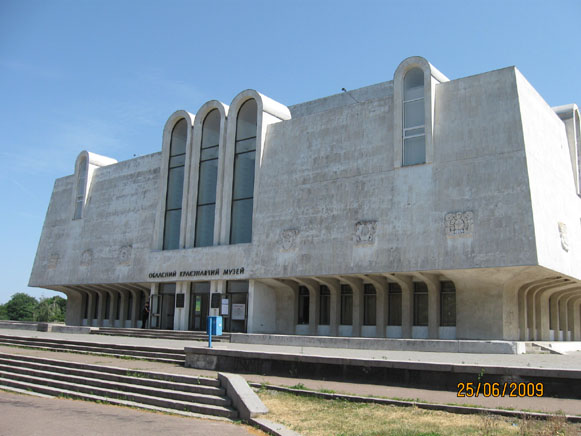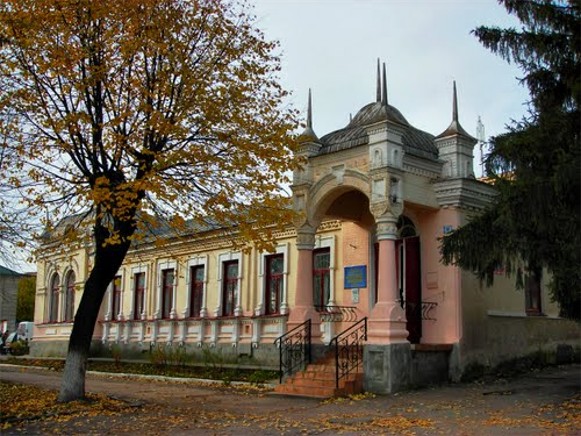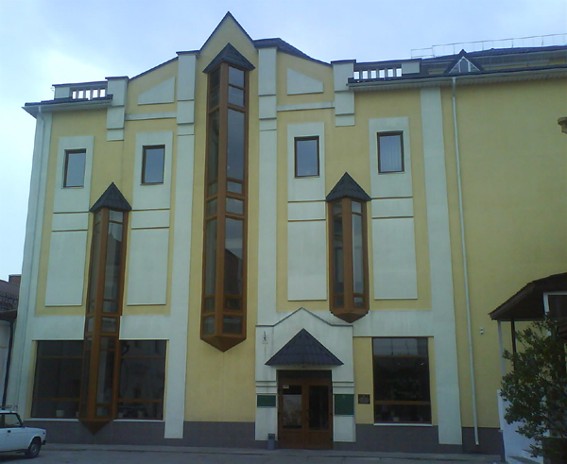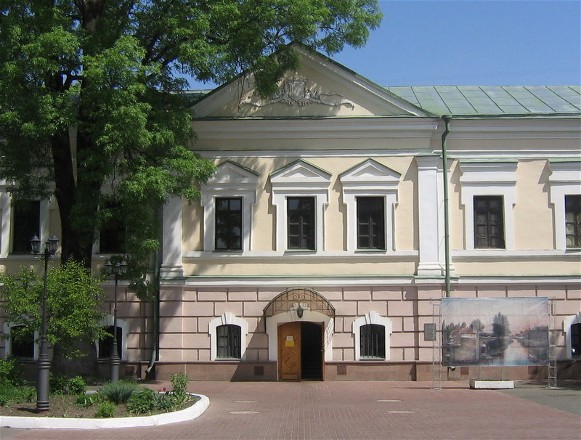Regional studies museums
Regional studies museums (Краєзнавчі музеї; Kraieznavchi muzei). Cultural, educational, and scientific institutions that collect, preserve, exhibit, and study monuments of a region's natural, archeological, ethnic, artistic, and political development. In Ukraine museums of regional history appeared in the 19th century: in Mykolaiv (1806), Odesa (1825), Kerch (1826), Kyiv (1835), Katerynoslav (1849), Chernivtsi (1863), Simferopol (1887), Kherson (1890), Poltava (1891), Lviv (1893), and Chernihiv (1897). Their basic collections consisted of artifacts from archeological excavations; those were supplemented gradually with historical, ethnographic, natural, and artistic materials. The first founders of such museums were Oleksander Pol, Oleksander Lazarevsky, Filaret Gumilevsky, and Dmytro Yavornytsky. During a period of official suppression of Ukrainian culture the regional studies museums reminded people of Ukraine's rich historical legacy.
After 1917–18 new regional studies museums were organized from the collections of various associations, church communities, and private individuals, such as V. Tazhovsky, Bohdan Khanenko and his wife Varvara, Vasyl Shchavynsky, and P. Pototsky. They developed rapidly in the 1920s, as a result of the intensive work of the Regional Studies Commission of the All-Ukrainian Academy of Sciences (est in 1922) and the Ukrainian Committee of Regional Studies in Kharkiv. In the 1930s many of them became inactive, and some were closed down. During the Second World War many museum exhibits were destroyed or shipped out of Ukraine.
Regional studies museums are divided into two main groups: state museums, which are fully government-supported, and community museums, which are funded by a local community and are housed on factory premises, in collective-farm buildings, or in schools. The latter group are run by volunteers who are concerned about the preservation of cultural monuments. In 2005 there were 115 state regional studies museums. The more important ones are the Poltava Regional Studies Museum, Rivne Regional Studies Museum, Kherson Regional Studies Museum, Luhansk Regional Studies Museum, Ivano-Frankivsk Regional Studies Museum, Cherkasy Oblast Regional Studies Museum (est 1918, five branches, 106,000 exhibits), Zaporizhia Regional Studies Museum, Transcarpathian Regional Studies Museum, Zhytomyr Regional Studies Museum, Khmelnytskyi Regional Studies Museum (est 1925, four branches, 57,000 exhibits), Crimea Regional Studies Museum (est 1899, two branches, 56,000 exhibits), Mykolaiv Regional Studies Museum (est 1950), Odesa Regional Studies Museum (est 1955, seven branches, 50,000 exhibits), Volhynian Regional Studies Museum in Lutsk (est 1929, over 160,000 exhibits), and Vinnytsia Regional Studies Museum. In the Soviet period the exhibition in each of them was organized according to a prescribed format and was usually divided into the following departments: natural history, ethnography, prerevolutionary history, history of the Soviet period, and the contemporary period. Most of the materials were of recent origin: they dealt with the founding of local communist organizations; the local people's involvement in the Revolution of 1917, the Civil War, and the First and Second world wars; workers and products of the local industries; production statistics and graphs; improvements in living standards; the local writers, artists, and press. There were few materials of national significance; most of them were ethnographic. Religious artifacts were used for antireligious propaganda. The commentary of the guides was screened by higher authorities and was given in Russian. Ukrainian was used occasionally only in some museums in Western Ukraine. Regional studies museums were treated as an important medium of ideological propaganda. Each museum was staffed by several dozen specialists. Apart from guides to exhibits very little was published by the museums.
Community-run regional studies museums began to appear in the 1940s and 1950s and were organized by amateur groups. In 1959 there were approximately 200 such museums. In the late 1960s the authorities threw their support behind local initiatives and set up a broad regional studies museums program. By 1965 there were up to 1,000 regional studies museums in Ukraine. In 1965 the Ministry of Culture in Moscow issued a special decree on the organization and activities of community museums in the USSR. Besides general there were specialized (historical, literary, theater, art) regional studies museums. The museums in Opishnia, Velyki Sorochyntsi, and Marianivka in Poltava oblast, Velykyi Khodachkiv in Ternopil oblast, and Serednie Vodiane in Transcarpathia have specialized in folk costumes and embroidery; those in Yavoriv and Sosnivka in Lviv oblast and Petrykivka in Dnipropetrovsk oblast have dealt with folk decorative art. Regional studies museums in schools were regulated by a specific statute on school museums issued by the USSR Ministry of Education in 1974. By 1983 there were nearly 6,000 community museums in Ukraine. Most of them were small amateur expositions in community buildings, dealing with the history of particular villages, towns, factories, and firms, or with military or production heroes. The museums have conducted valuable ethnographic studies of various territories. They have preserved implements and costumes that have been disappearing from everyday use because of technological progress, such as hand mills, mortars, weapons from different periods, ceramic and wooden dishes, folk costumes, embroidery, footwear, coins, manuscripts, and old books. Some of the museums have reconstructions of the interior of peasant cottages. State museum staff and specialists from various cultural, scientific, and educational institutions often have acted as consultants to community museums. Churches and abandoned cottages often have been converted into museum facilities. Some 49 community museums in Ukraine were housed in churches in 1978. In the late 1980s some of these churches were returned to their religious communities.
Open-air community museums (see Museums of folk architecture and folkways) have became increasingly popular since the late 1960s. In the late 1960s and early 1970s over 10 such museums were established in Transcarpathia, in Antonivka, Zubivka, Osii, Petrivka, and elsewhere. In the late 1980s independent associations or clubs of amateurs interested in Ukrainian history have sprung up at the museums. Many private collections amassed by enthusiasts of national culture, such as Ivan Honchar in Kyiv (now part of the Ukrainian Center for Folk Culture «Ivan Honchar's Museum»), could be counted as regional studies museums.
Ukrainian regional studies museums exist also outside Ukraine. A number of museums were established after the Second World War: the Svydnyk Museum of Ukrainian Culture in Czechoslovakia, the museums of Ruthenian culture in Ruski Krstur and Petrovci in Yugoslavia, the Museum of Lemko Culture in Zyndranowwa, Gorlice, and Bielanka in Poland. In Alberta the Ukrainian Cultural Heritage Village collects and studies materials on the life of Ukrainians in Canada.
Mykola Mushynka
[This article originally appeared in the Encyclopedia of Ukraine, vol. 4 (1993).]
.jpg)
.jpg)


.jpg)


.jpg)
.jpg)